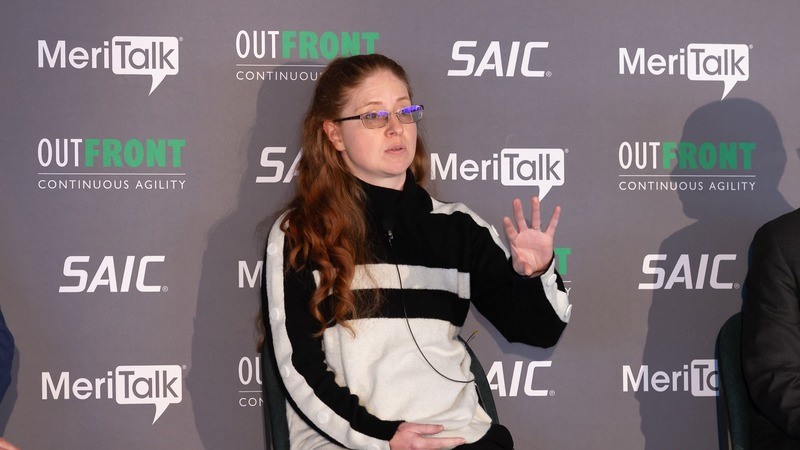
Long-time Pentagon technology leader Sharon Woods has landed at Invisible Technologies – a San Francisco-based provider of AI operating systems for enterprise customers – following her departure from the Defense Information Systems Agency (DISA) earlier this month.
Woods joined Invisible on Aug. 18 with the title of senior vice president of enterprise accounts, public sector. Her focus in the new position encompasses the global public sector, including not just the Defense Department (DOD), but also federal civilian agencies, state and local governments, and international partner nations.
During two decades at DOD, Woods was director of DISA’s J9 Hosting and Compute Center (HaCC), headed its J6 Endpoint Services and Global Service Center, and led its Cloud Computing Program Office (CCPO).
In an interview with MeriTalk this week, Woods talked about her aims in joining Invisible and what the company is looking to bring to the public sector marketplace.
MeriTalk: Sharon, what drew you to the private sector and, in particular, Invisible Technologies?

Woods: I had the opportunity within DOD to drive adoption of commercial cloud technology, and by joining Invisible, I feel like I will have that same opportunity with artificial intelligence. AI is at the cutting edge, and I think that there’s a lot more that the Department of Defense and the public sector writ large can do to take advantage of AI.
MeriTalk: What is Invisible bringing to the market?
Woods: What differentiates Invisible from other companies is that they make AI work. They have deeply technical teams. They have an incredible AI software platform. It is customizable, and it is modular. With Invisible, it’s all about solving problems, taking messy data and transforming it into real results.
MeriTalk: Can you tell us about some recent work that would illustrate that?
Woods: I’ll point you to one instance in which a customer – SAIC – explains it best in recounting Invisible’s work, along with other partners, during the Talisman Sabre 2025 bilateral exercise between the United States and Australia, with the payoff being real-world testing of collaborative autonomy.
MeriTalk: And finally, taking a broad look at the federal government’s increasing embrace of AI and especially through the recent AI Action Plan from the White House, what’s your view on what government agencies should be looking for as they move along?
Woods: The government is in the early stages of a high-stakes race to harness the transformative potential of artificial intelligence. Meanwhile, innovative companies like Invisible Technologies are already deploying AI in practical, scalable ways – redefining how we interact with data and setting the standard for real-world implementation.
